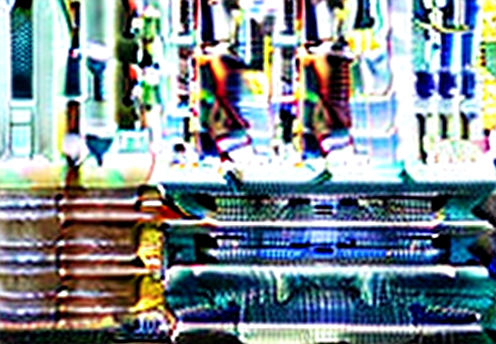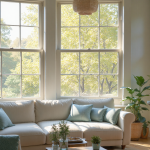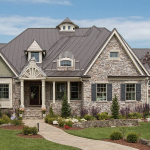Best Siding for Midwest Homes in 2025: Vinyl vs. Engineered Wood
Best Siding for Midwest Homes: Vinyl vs. Engineered Wood (2025)
The Midwest presents a unique set of challenges for homeowners when it comes to selecting the right siding. From the biting winds and heavy snowfall of winter to the sweltering humidity of summer, the region’s fluctuating temperatures and extreme weather conditions demand a durable and resilient exterior. This makes choosing the right siding material a critical decision for protecting your investment and ensuring long-term performance. This article offers a comprehensive comparison of two popular siding choices for Midwest homes in 2025: vinyl and engineered wood.
We’ll delve into their respective performance characteristics, weigh the pros and cons of each, and analyze their suitability for the distinct Midwest climate. Factors such as durability, cost-effectiveness, aesthetics, energy efficiency, and environmental impact will be thoroughly examined to empower you to make an informed decision. Choosing the right siding not only safeguards your home against the elements but also significantly impacts its curb appeal and resale value, making it a crucial aspect of both home improvement and real estate considerations.
Midwest homeowners often prioritize durability and weather resistance. Vinyl siding, known for its resistance to rot, insects, and moisture damage, has long been a popular choice. Its resilience against harsh weather makes it well-suited for the Midwest’s variable climate. Engineered wood, a newer entrant in the siding market, offers comparable durability, particularly when treated with protective coatings designed to withstand extreme temperatures and humidity. However, understanding the long-term maintenance requirements of each material is critical for maximizing their lifespan in this demanding climate.
For instance, while vinyl requires minimal upkeep, engineered wood may need periodic repainting or sealing to maintain its appearance and protective barrier against the elements. This can influence both the overall cost and the homeowner’s time commitment. Cost is another significant factor for homeowners. Vinyl siding generally offers a lower upfront cost, making it an attractive option for budget-conscious renovators. Engineered wood, while typically more expensive initially, can offer a higher return on investment in the long run due to its potential for increased home value.
This is particularly relevant in the Midwest real estate market, where exterior aesthetics and durability are highly valued. Furthermore, the rising popularity of sustainable building materials has placed engineered wood, often sourced from responsibly managed forests, in a favorable position. The growing emphasis on eco-friendly home improvement solutions in 2025 adds another layer to the decision-making process. Beyond cost and durability, aesthetics play a vital role in siding selection. Vinyl siding comes in a wide array of colors and styles, offering homeowners flexibility in exterior design.
Engineered wood, with its natural wood grain texture, provides a more premium, classic look that can enhance curb appeal significantly. This is a key consideration for homeowners looking to boost their property’s value. Ultimately, the best siding choice depends on a homeowner’s individual needs, budget, and desired aesthetic. By carefully evaluating the performance characteristics, cost implications, and environmental impact of both vinyl and engineered wood, Midwest homeowners can make informed decisions that enhance their homes for years to come. Consulting with local building professionals and staying informed about the latest trends in building materials and exterior design can further assist in making the optimal choice for 2025 and beyond.
Performance Comparison: Durability, Cost, and Aesthetics
**Durability:** In the context of Midwest homes, where weather patterns can shift dramatically from sub-zero winters to humid summers, durability is paramount. Vinyl siding stands out for its inherent resistance to rot, insect infestation, and moisture damage – issues that frequently plague wood-based materials in this region. Unlike traditional wood, vinyl won’t warp or decay when exposed to the elements, reducing long-term maintenance costs. Engineered wood siding, while also durable, requires a more proactive approach.
Its protective coatings and sealants must be maintained to prevent moisture penetration and potential damage. For instance, a homeowner in Des Moines might find vinyl a more worry-free solution, while a homeowner in a more sheltered area may find engineered wood’s aesthetic appeal worth the extra maintenance effort. The key is understanding the microclimate around your specific property when assessing the long-term durability of these materials. **Cost:** When evaluating siding options, the initial investment is often a significant factor.
Vinyl siding typically has a lower upfront cost compared to engineered wood siding. This cost-effectiveness makes it an attractive choice for budget-conscious homeowners or those looking to maximize their return on investment when selling their Midwest home. However, the long-term cost equation is more nuanced. Engineered wood, while pricier initially, can offer better value over time due to its longevity and resistance to damage. It may also increase a home’s curb appeal, potentially raising its resale value.
For example, a real estate analysis in a Chicago suburb might show that homes with engineered wood siding tend to command slightly higher prices than those with vinyl, reflecting the perception of enhanced quality and aesthetics. Homeowners need to consider not just the initial cost, but also the potential long-term implications on maintenance and property value. **Aesthetics:** Both vinyl and engineered wood siding offer diverse aesthetic options, allowing homeowners to achieve a wide range of exterior designs.
Vinyl siding has made significant strides in mimicking the look of natural wood, with various textures and profiles available. However, engineered wood siding often provides a more authentic wood appearance, with deeper grain patterns and a richer visual appeal. This difference can be particularly important for homeowners aiming for a more traditional or upscale look for their Midwest home. For example, in a historic neighborhood in St. Louis, engineered wood might be favored for its ability to maintain the area’s architectural integrity, while vinyl might be chosen for its versatility and cost-effectiveness in newer subdivisions.
The choice often depends on personal preference and the desired aesthetic for the property. **Energy Efficiency:** Energy efficiency is a crucial consideration for Midwest homeowners, given the region’s extreme temperatures. Both vinyl and engineered wood siding can contribute to improved energy performance, especially when paired with proper insulation. Many vinyl siding products now come with insulated backing, which can significantly reduce heat transfer and lower energy bills. Similarly, engineered wood can be installed with a thermal barrier to enhance its insulation properties.
However, the installation technique plays a critical role. Properly sealed seams and well-insulated walls are crucial to preventing drafts and moisture infiltration. A home energy audit in a Minneapolis suburb, for instance, might reveal that homes with well-installed, insulated siding – regardless of material – experience significantly lower energy costs compared to those with poorly installed or uninsulated siding. The combination of siding material and installation quality is key to maximizing energy efficiency. **Maintenance:** The maintenance requirements for vinyl and engineered wood siding differ considerably.
Vinyl siding is known for its low-maintenance properties. It typically only requires occasional cleaning with soap and water to remove dirt and grime. It doesn’t need repainting or staining, making it a convenient option for busy homeowners. Engineered wood, on the other hand, usually requires more regular maintenance. It may need repainting or re-staining every few years to maintain its appearance and protective qualities. This can be a significant consideration for homeowners who prefer a hands-off approach.
For example, a busy family in a suburb of Indianapolis might find the low-maintenance aspect of vinyl more appealing, while a homeowner who enjoys home improvement projects might prefer the aesthetic and customizability of engineered wood, despite the added maintenance. The choice often comes down to a balance of aesthetic preference and lifestyle considerations. **Real-World Examples and Regional Considerations:** Beyond the general characteristics of vinyl and engineered wood, specific regional factors in the Midwest can influence a homeowner’s choice.
For instance, in areas prone to severe storms, vinyl siding’s impact resistance might be a crucial factor, while in older neighborhoods, the authentic wood appearance of engineered wood could be favored to maintain architectural consistency. The siding installation process itself also differs, with vinyl being generally easier for DIY enthusiasts, while engineered wood often requires professional installation due to its weight and more complex fitting requirements. Furthermore, the long-term effects on curb appeal and property value cannot be overlooked. Homes with well-maintained, attractive siding tend to sell faster and at higher prices. Therefore, homeowners should consider the long-term implications of their siding choice on both their enjoyment of the home and its potential resale value. This makes understanding the nuanced differences between vinyl and engineered wood a key aspect of responsible home improvement in the Midwest.
Energy Efficiency and Insulation
Energy Efficiency and Insulation: A Crucial Consideration for Midwest Homes In the Midwest’s demanding climate, energy efficiency is paramount. Minimizing energy loss during harsh winters and hot summers is key to controlling utility costs and maintaining a comfortable living environment. Both vinyl and engineered wood siding offer avenues for improved insulation, though their approaches differ. Understanding these nuances is crucial for making an informed decision aligned with your budget and long-term homeownership goals. Vinyl siding, often chosen for its affordability and low maintenance, can significantly boost a home’s thermal performance when installed with insulation backing.
Rigid foam insulation boards are commonly used, creating a thermal barrier against temperature fluctuations. This added layer of insulation not only reduces energy consumption but also contributes to a quieter indoor environment by dampening exterior noise. Homeowners opting for vinyl siding should explore different insulation R-values to optimize energy savings based on their specific needs and local climate conditions. Consulting with a qualified siding contractor can help determine the optimal R-value for your Midwest home, factoring in local building codes and energy efficiency targets.
Engineered wood siding, while generally more expensive upfront, also presents opportunities for enhanced insulation. Similar to vinyl, it can be installed with rigid foam insulation backing. However, the denser composition of engineered wood itself contributes to its inherent insulating properties. This can result in slightly improved thermal performance compared to vinyl siding with equivalent insulation backing. Furthermore, the natural texture and thickness of engineered wood can provide an added layer of sound dampening, enhancing the tranquility of your home’s interior.
For homeowners prioritizing both aesthetics and energy performance, engineered wood siding presents a compelling option. Beyond the siding material itself, proper installation and meticulous sealing are critical for maximizing energy efficiency and preventing moisture-related issues. A well-sealed building envelope is essential for minimizing air leakage, a major contributor to energy loss in Midwest homes. Professional installers experienced in working with both vinyl and engineered wood siding can ensure proper sealing around windows, doors, and other penetrations.
This attention to detail is crucial for preventing drafts, moisture infiltration, and potential mold growth, safeguarding both your home’s energy performance and structural integrity. In the 2025 market, homeowners are increasingly focused on eco-conscious building practices, and proper installation plays a key role in achieving these goals. When evaluating insulation options for your Midwest home, consulting local building codes is essential. These codes outline minimum insulation requirements designed to ensure energy efficiency and occupant comfort.
Compliance with these codes is not only legally required but also contributes to the long-term value and marketability of your property. Additionally, exploring available rebates and incentives for energy-efficient home improvements can help offset upfront costs and further enhance the return on your investment. Programs like ENERGY STAR offer guidance and resources for homeowners seeking to improve their home’s energy performance and reduce their environmental footprint. These initiatives reflect the growing emphasis on sustainability in the building industry and provide valuable support for homeowners undertaking energy-efficient renovations in 2025 and beyond.
Installation, Sustainability, and Regional Factors
“Installation:** Vinyl siding’s ease of installation is a major draw for Midwest homeowners looking to save on labor costs. Its lightweight panels and interlocking system often make it a manageable DIY project for experienced individuals, though complex projects still benefit from professional expertise. This can significantly reduce the overall project cost, especially for those comfortable with home improvement tasks. However, improper installation can compromise its weather resistance, leading to moisture infiltration and other issues. Therefore, careful attention to manufacturer instructions and best practices is crucial, especially considering the Midwest’s demanding climate.
Consulting local contractors for guidance on tricky areas like window and door flashing can prevent costly repairs down the line. Engineered wood siding, with its heavier profiles and more intricate joinery, typically necessitates professional installation. This added expense is often offset by the material’s robust nature and refined aesthetic, contributing to a higher perceived value for the home. Finding a contractor specializing in engineered wood is key to ensuring a weathertight and visually appealing result, especially given the Midwest’s fluctuating temperatures and humidity.
For homeowners prioritizing a quicker turnaround, vinyl siding offers a distinct advantage. Its straightforward installation process can often be completed in a fraction of the time compared to engineered wood, minimizing disruption to daily life. This speed, coupled with the potential for DIY installation, makes vinyl a popular choice for time-sensitive projects or those on a tighter budget. Engineered wood, while requiring more time and specialized skills, offers the potential for intricate detailing and customization, allowing for a more bespoke exterior design.
The added labor investment can result in a truly unique and eye-catching façade that enhances curb appeal and complements the architectural style of Midwest homes. **Sustainability:** Vinyl siding’s PVC content raises environmental concerns regarding its production and disposal. While recyclable options exist, the process is not always readily available or efficient. However, advancements in vinyl siding manufacturing are incorporating recycled content and exploring more sustainable formulations, addressing these concerns. Engineered wood can be a more environmentally friendly choice, especially when sourced from responsibly managed forests certified by organizations like the Forest Stewardship Council (FSC).
Choosing FSC-certified wood ensures that the material comes from forests managed for long-term ecological health and social responsibility, a growing concern for environmentally conscious homeowners. Furthermore, engineered wood often utilizes wood byproducts, minimizing waste and promoting resource efficiency. However, the manufacturing process for engineered wood can involve adhesives and resins that may have environmental impacts, highlighting the importance of selecting products with low-VOC (volatile organic compound) emissions. Looking ahead to 2025 and beyond, manufacturers are increasingly focused on developing bio-based resins and more sustainable manufacturing processes for engineered wood siding, further reducing its environmental footprint. Ultimately, homeowners seeking sustainable siding options should carefully evaluate both vinyl and engineered wood, considering factors such as sourcing, manufacturing processes, and end-of-life disposal or recyclability. Consulting with building material suppliers and industry experts can provide valuable insights into the latest sustainable siding options available in the Midwest.”
Conclusion: Making the Right Choice
For Midwest homeowners navigating the 2025 siding landscape, the choice between vinyl and engineered wood necessitates a comprehensive evaluation of cost, durability, aesthetics, and environmental impact, all while considering the unique regional climate. Vinyl siding, renowned for its affordability and minimal upkeep, presents a compelling option for budget-conscious homeowners. Its resistance to rot, insects, and the often-humid Midwest summers eliminates the need for costly and time-consuming repainting or staining, a significant advantage in regions with unpredictable weather patterns.
However, vinyl’s susceptibility to extreme temperature fluctuations, a common occurrence in Midwest winters, can lead to cracking or warping, potentially impacting its long-term value. Engineered wood, crafted from wood fibers and resin binders, offers a more premium aesthetic, often mimicking the natural look of traditional wood siding, enhancing a home’s curb appeal and potentially boosting its real estate value. This material provides a robust and durable exterior, capable of withstanding the Midwest’s harsh climate conditions, but typically comes at a higher initial cost.
Homeowners prioritizing a natural, upscale look may find the investment worthwhile, factoring in the potential for increased property value and the material’s longevity. The energy efficiency demands of Midwest homes, where both heating and cooling costs can be substantial, also play a crucial role in siding selection. Both vinyl and engineered wood siding can be enhanced with insulation backing, boosting thermal performance and contributing to lower energy bills. Proper installation, a critical aspect often overlooked, is paramount to maximizing energy efficiency and preventing drafts.
For vinyl siding, ensuring tight seams and proper flashing around windows and doors are crucial, while engineered wood requires meticulous sealing to prevent moisture infiltration, a potential issue in the humid summer months. Consulting with local contractors specializing in Midwest construction and adhering to regional building codes for insulation requirements are essential steps in ensuring optimal energy performance. Furthermore, the growing emphasis on sustainable building practices adds another dimension to the decision-making process. While vinyl siding’s PVC content raises environmental concerns, advancements in recycling technologies are gradually improving its sustainability profile.
Engineered wood, often sourced from sustainable forests and utilizing recycled wood fibers, presents a more environmentally friendly option for eco-conscious homeowners. However, the manufacturing processes and transportation of engineered wood can contribute to its overall carbon footprint, requiring careful consideration of sourcing and manufacturing practices. Ultimately, the ideal siding choice hinges on a homeowner’s individual priorities and the specific characteristics of their property. A thorough assessment of budget constraints, desired aesthetic, and long-term maintenance goals is essential. For those seeking a cost-effective, low-maintenance solution, vinyl siding offers a practical choice. Homeowners prioritizing a premium, natural aesthetic and willing to invest in long-term value may find engineered wood a more suitable option. Consulting with local contractors experienced in Midwest construction is crucial for obtaining tailored recommendations and ensuring a seamless installation process that adheres to regional best practices and maximizes the chosen siding’s performance in the unique Midwest climate.


